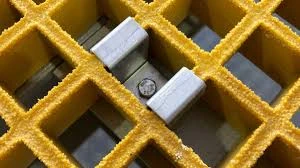
-
 Afrikaans
Afrikaans -
 Albanian
Albanian -
 Amharic
Amharic -
 Arabic
Arabic -
 Armenian
Armenian -
 Azerbaijani
Azerbaijani -
 Basque
Basque -
 Belarusian
Belarusian -
 Bengali
Bengali -
 Bosnian
Bosnian -
 Bulgarian
Bulgarian -
 Catalan
Catalan -
 Cebuano
Cebuano -
 China
China -
 China (Taiwan)
China (Taiwan) -
 Corsican
Corsican -
 Croatian
Croatian -
 Czech
Czech -
 Danish
Danish -
 Dutch
Dutch -
 English
English -
 Esperanto
Esperanto -
 Estonian
Estonian -
 Finnish
Finnish -
 French
French -
 Frisian
Frisian -
 Galician
Galician -
 Georgian
Georgian -
 German
German -
 Greek
Greek -
 Gujarati
Gujarati -
 Haitian Creole
Haitian Creole -
 hausa
hausa -
 hawaiian
hawaiian -
 Hebrew
Hebrew -
 Hindi
Hindi -
 Miao
Miao -
 Hungarian
Hungarian -
 Icelandic
Icelandic -
 igbo
igbo -
 Indonesian
Indonesian -
 irish
irish -
 Italian
Italian -
 Japanese
Japanese -
 Javanese
Javanese -
 Kannada
Kannada -
 kazakh
kazakh -
 Khmer
Khmer -
 Rwandese
Rwandese -
 Korean
Korean -
 Kurdish
Kurdish -
 Kyrgyz
Kyrgyz -
 Lao
Lao -
 Latin
Latin -
 Latvian
Latvian -
 Lithuanian
Lithuanian -
 Luxembourgish
Luxembourgish -
 Macedonian
Macedonian -
 Malgashi
Malgashi -
 Malay
Malay -
 Malayalam
Malayalam -
 Maltese
Maltese -
 Maori
Maori -
 Marathi
Marathi -
 Mongolian
Mongolian -
 Myanmar
Myanmar -
 Nepali
Nepali -
 Norwegian
Norwegian -
 Norwegian
Norwegian -
 Occitan
Occitan -
 Pashto
Pashto -
 Persian
Persian -
 Polish
Polish -
 Portuguese
Portuguese -
 Punjabi
Punjabi -
 Romanian
Romanian -
 Russian
Russian -
 Samoan
Samoan -
 Scottish Gaelic
Scottish Gaelic -
 Serbian
Serbian -
 Sesotho
Sesotho -
 Shona
Shona -
 Sindhi
Sindhi -
 Sinhala
Sinhala -
 Slovak
Slovak -
 Slovenian
Slovenian -
 Somali
Somali -
 Spanish
Spanish -
 Sundanese
Sundanese -
 Swahili
Swahili -
 Swedish
Swedish -
 Tagalog
Tagalog -
 Tajik
Tajik -
 Tamil
Tamil -
 Tatar
Tatar -
 Telugu
Telugu -
 Thai
Thai -
 Turkish
Turkish -
 Turkmen
Turkmen -
 Ukrainian
Ukrainian -
 Urdu
Urdu -
 Uighur
Uighur -
 Uzbek
Uzbek -
 Vietnamese
Vietnamese -
 Welsh
Welsh -
 Bantu
Bantu -
 Yiddish
Yiddish -
 Yoruba
Yoruba -
 Zulu
Zulu
Advantages of FRP Pipes and Fittings in Marine Engineering Applications
The Use of FRP Pipes and Fittings in Ship Construction
In the ever-evolving maritime industry, the demand for innovative materials that can withstand harsh environments while offering enhanced performance has led to the increased adoption of Fiberglass Reinforced Plastic (FRP) pipes and fittings in ship construction. The properties of FRP, including its corrosion resistance, lightweight nature, and durability, have made it an ideal choice for various applications within the marine sector.
Understanding FRP and Its Composition
FRP is a composite material made of a polymer matrix reinforced with fibers, commonly glass fibers. This combination results in a material that is not only strong and lightweight but also resistant to corrosion and degradation due to saltwater exposure. These characteristics are particularly critical in the marine environment, where traditional materials like steel and concrete may succumb to rust and deterioration over time.
Benefits of FRP Pipes and Fittings
1. Corrosion Resistance One of the primary advantages of FRP is its exceptional resistance to corrosion, particularly from saltwater and chemicals often used in ship operations. This trait reduces maintenance costs and extends the lifespan of pipes and fittings, making FRP a cost-effective option over the long term.
2. Lightweight Nature FRP pipes and fittings are significantly lighter than their metal counterparts. This reduction in weight translates to lower fuel consumption and increased efficiency during transportation and installation. Ships can carry more cargo or fuel, enhancing their economic viability.
frp pipes and fittings utilized in ship construction

3. Design Flexibility The manufacturing process of FRP allows for greater design flexibility, enabling the creation of custom shapes and sizes to meet specific engineering requirements. This capability is particularly useful for ship builders who face unique design challenges based on the vessel’s layout and function.
4. Thermal and Electrical Insulation FRP offers excellent thermal and electrical insulating properties, making it well-suited for various applications aboard ships. This feature helps in maintaining temperature control, which is crucial for cargo transport and crew comfort.
5. Resistance to Biofouling Ships operating in marine environments often face challenges from biofouling organisms, which can degrade performance and increase maintenance costs. FRP’s smooth surface minimizes the adherence of these organisms, helping maintain efficiency and reduce cleaning efforts.
Applications in Ship Construction
FRP pipes and fittings are utilized in multiple systems aboard ships, including
- Sea Water Intake and Discharge Systems The corrosion-resistant properties of FRP make it ideal for systems that handle seawater, ensuring reliability and longevity. - Fuel and Oil Transfer Lines Lightweight FRP fittings reduce the overall weight of fuel systems while providing the necessary strength and durability. - Ballast Water Treatment Systems With increasing regulations surrounding environmental protection, FRP’s resistance to chemicals used in ballast water treatment underscores its importance in modern shipbuilding. - Freshwater Systems FRP’s non-corrosive nature makes it a perfect choice for freshwater piping systems, ensuring potable water quality is maintained. Conclusion
The integration of FRP pipes and fittings into ship construction represents a significant advancement in marine engineering. The unique properties of FRP not only enhance the performance and lifespan of maritime vessels but also contribute to cost savings through reduced maintenance and increased operational efficiency. As the industry continues to prioritize sustainability and efficiency, the role of FRP is likely to expand, paving the way for more innovative solutions that meet the demands of modern shipbuilding. The adoption of FRP technologies not only aligns with the goals of shipbuilders but also promotes environmental stewardship, making it a material of choice for the future of maritime construction.
Latest news
-
Exploring the Benefits of Top Hammer Drifter Rods for Enhanced Drilling PerformanceNewsJun.10,2025
-
High-Precision Fiberglass Winding Machine for GRP/FRP Pipe Production – Reliable & Efficient SolutionsNewsJun.10,2025
-
FRP Pipes & Fittings for Shipbuilding - Corrosion-Resistant & LightweightNewsJun.09,2025
-
Premium FRP Flooring Solutions Durable & Slip-ResistantNewsJun.09,2025
-
Premium Fiberglass Rectangular Tanks Durable & Lightweight SolutionNewsJun.09,2025
-
Tapered Drill String Design Guide Durable Performance & UsesNewsJun.09,2025









